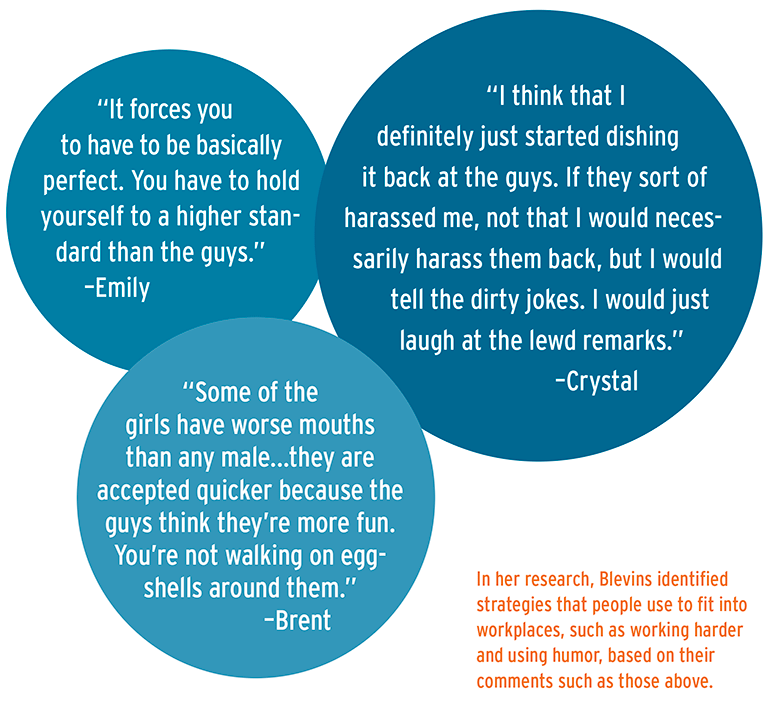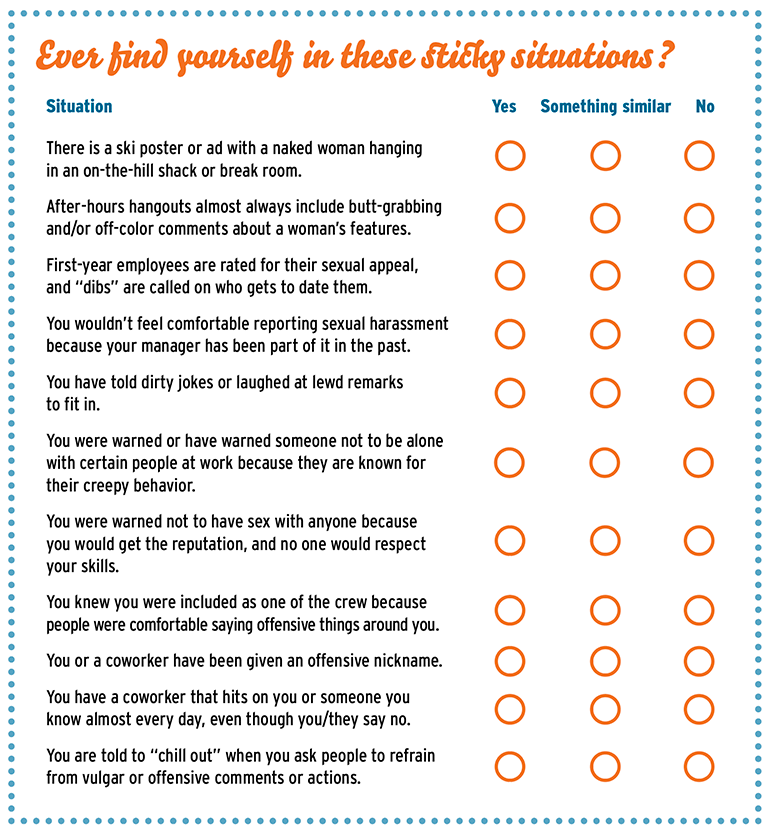In 2015, a group of National Park Service employees reported years of sexual assault and harassment by the river rangers at Grand Canyon National Park, and a conversation ensued about the culture of sexual harassment in the river community. As a former whitewater rafting guide of 12 years on the famed New, Gauley, and Snake Rivers, I took keen interest in this. It spurred my qualitative research project, in which I investigated how people negotiate their gender as raft guides. Since then, I have interviewed 60 raft guides about their experience with sexual harassment and assault and completed 200 hours of observation.

The camaraderie and fun of being an outdoor industry employee made a lasting impression on me, as it does many others. Whitewater guiding shares lots of similarities to the seasonal work at ski areas, with many people working in both industries. They also share commonalities of gritty on-the-job joking, after-work parties, and historically having fewer women in high-profile jobs. While the joking and parties can be fun, it can also lead to a culture of harassment.
To be clear, the outdoor industry has made a lot of progress in combating harassment and elevating talented female leaders. It’s a concerted effort that continues to gain momentum, but, as my research suggests, there’s work to be done.
The outdoor industry attracts fun, adventurous people seeking an active place to work, but it also tolerates some sexist, racist, and demeaning behaviors that would be deemed inappropriate in more professional settings. Some behaviors can start out as fun and are fine, until one day the line gets crossed, and what seemed OK before, isn’t. This can drive away employees when they’re made uncomfortable by that aspect of the culture.
The situations in the quiz on the opposite page were described to me during my research. They are scenarios that would be unacceptable in a more traditional workspace, but still exist in the outdoor and winter sports industries.
Take the quiz on below and see if any of the scenarios sound familiar.

If any sounded familiar, perhaps they made you think about how often we encounter unsavory behaviors. How often are they written off as “what happens in a ski town”? It does not have to be like this, of course. And resort operators should continue to drive change.
With that in mind, here are some suggestions rooted in my research and in organizational communication theory that can help guide this effort.
Reporting Systems
Even in the most traditional workplaces, harassment reporting structures are challenging to navigate. Managers are responsible for putting a reporting process in place, and making sure the process is clearly communicated to employees within in the organization.
Some guidelines: Make sure there are a variety of people that can hear a harassment complaint. Research says that women are more likely to believe and act on a report of sexual harassment, so there needs to be gender diversity in your reporting structure. Once the system is in place, take an honest look at the repercussions of reporting to see if people are negatively impacted by it. Follow-up is key to understanding if the system works for everyone.
Power Structures
At the heart of a lot of issues around harassment is the power structure in many organizations. It can be easy to forget how it feels to be a first-year employee in a seasonal workplace, or that some people become institutional legends with a great deal of informal power within a company. It is important to make it clear to new employees that they will be listened to, even though they might not feel like they have a voice. It is also important to have a diverse group of people in leadership positions. People are more likely to report abuse to someone that looks or identifies like them.
It is also valuable for senior members of your company to mentor new staff members. In seasonal businesses where people come and go every year, people that have been with a company for a while might not want to socially invest in folks that will only be there a season or two. They might not understand what it is like to be a new employee or might not see that new employees don’t have access to senior staff members. Creating a mentor program can help bridge the divide between new and established staff.
Power Discrepancies with Customers
Research shows that people who work in service industries are more likely to be harassed by customers. Prepare customer-facing employees for this by providing a set of tools and rules to help combat that type of interaction. Give them a script of one-liners if needed, and then have a system in place in which staff can report customer harassment. You can even build a customer code of conduct into your product purchases or waivers. This agreement can outline consequences, like being asked to leave or being banned from the resort, if they do not treat your employees respectfully.
Hard Conversations
Research indicates that canned harassment training, as some companies employ, can actually have a negative impact and increase incidents of harassment. Instead of a lecture-type instruction better suited to more conventional workplaces, it might be useful to have honest conversations about what harassment looks like at a ski resort. Ask yourself, “Is this really fun for everyone?”
These conversations might include:
• Identifying behavior that makes people feel uncomfortable.
• Identifying groups that are targeted with jokes, harassment, or exclusion.
• Identifying ways to hold harassers accountable for their actions, such as acknowledging complaints when they happen, and taking corrective action.
• Clearly communicating that behavior that was accepted or overlooked in the past is no longer acceptable.
• Guiding staff in new behaviors that are more inclusive.
• Educating staff about consent.
• Creating a culture where people can express when they are no longer having fun, without negative consequences.
As I talk to people that work in the outdoor industry, there is an overall agreement that improvements can be made in making it a less sexist work environment. Creating ways for employees to communicate what is making them uncomfortable, and being willing to change, is a first step to make working in the ski industry fun for everyone.






